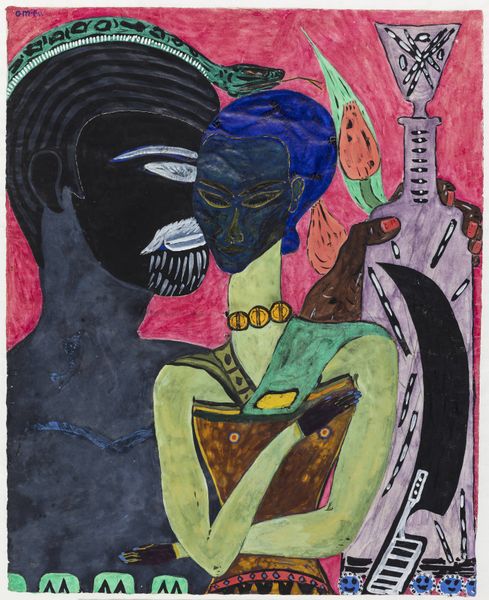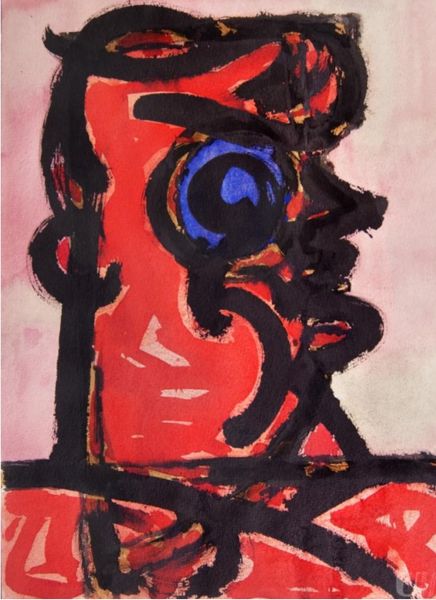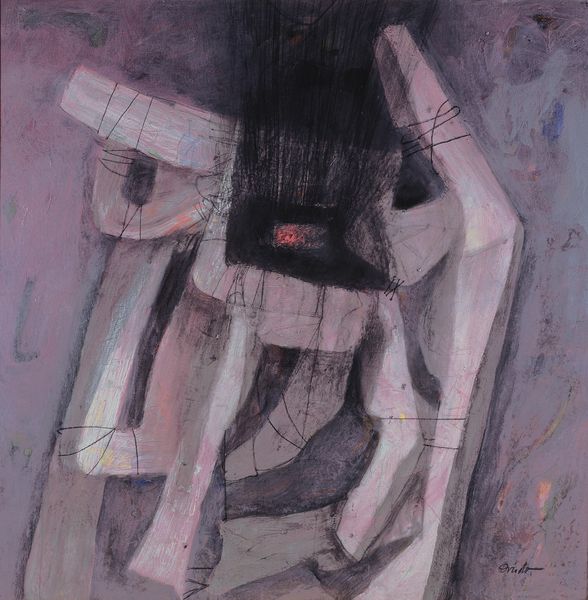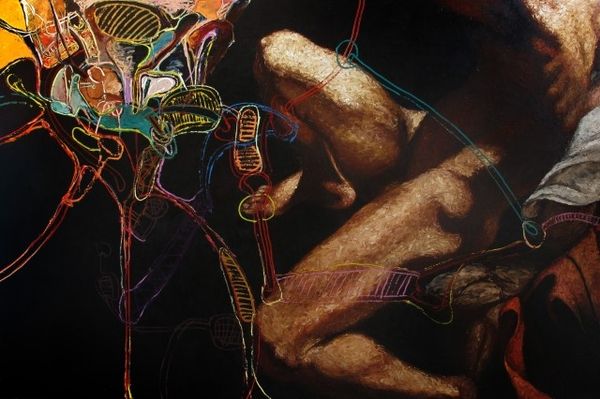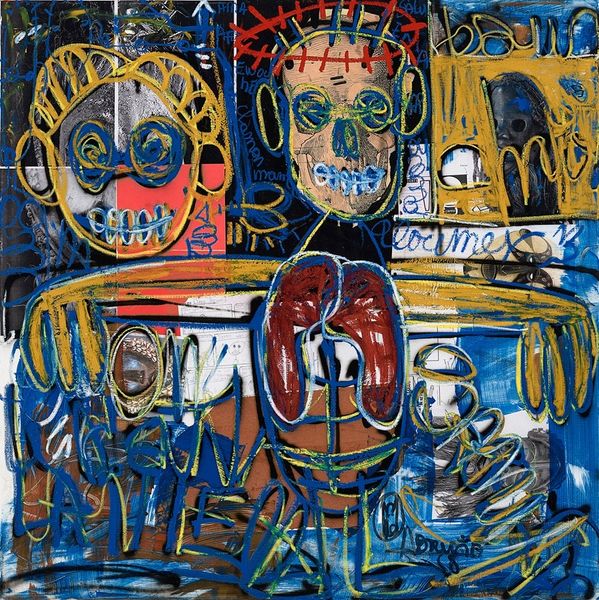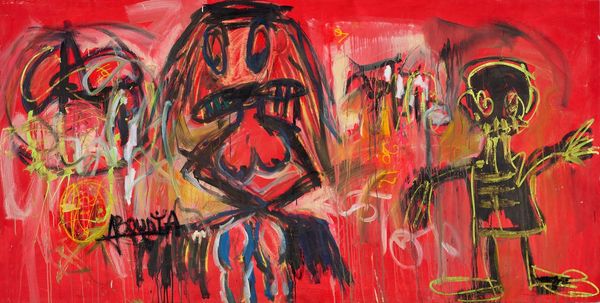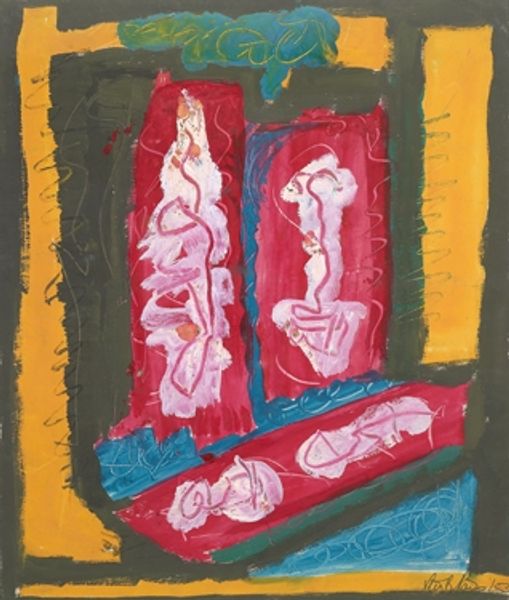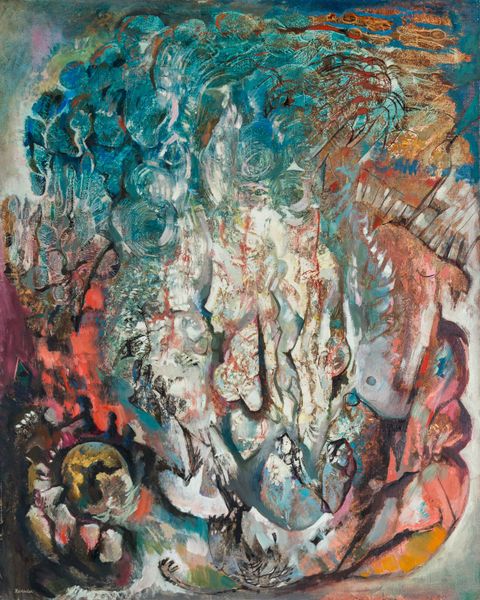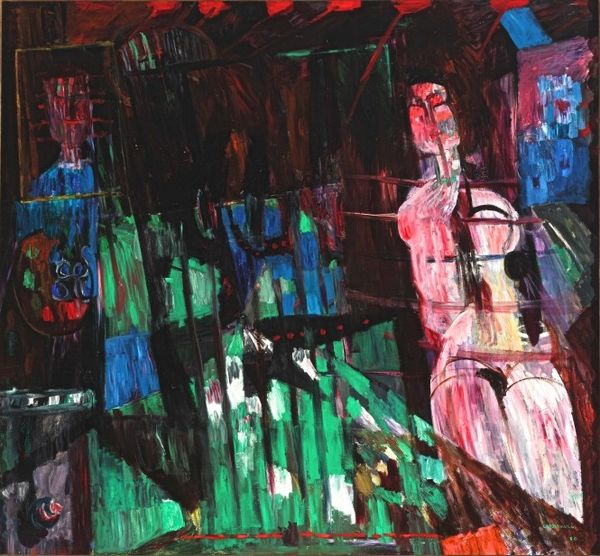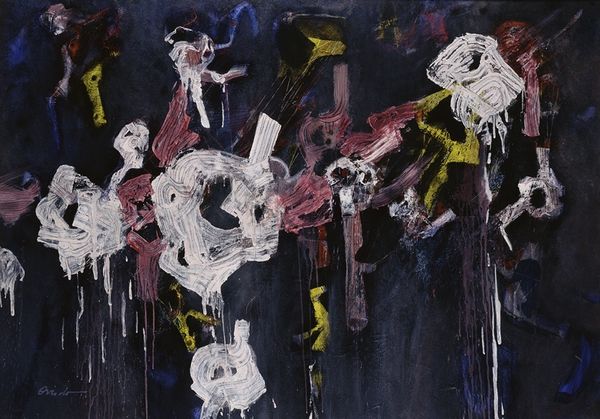
painting, acrylic-paint
#
abstract painting
#
painting
#
acrylic-paint
#
figuration
#
acrylic on canvas
#
abstraction
Dimensions: overall: 112.4 × 86.36 cm (44 1/4 × 34 in.)
Copyright: National Gallery of Art: CC0 1.0
Curator: This is "Current Forms: Yoruba Circle" completed by David C. Driskell in 1969 using acrylic on canvas. What’s your initial impression of this intriguing work? Editor: I find the pairing of geometric shapes and these figural elements immediately striking—it creates a wonderful contrast. A tension between the grounded rectangle below and the ethereal sphere above… it's dreamlike. Curator: Driskell was deeply moved by his travels to Nigeria. He sought to capture the spiritual and visual essence of Yoruba culture in his paintings. Editor: You know, it's incredible how he manages to meld such overt symbolism within what at first glance appears wholly abstract. The composition, the interplay of circular and rectangular forms—they aren't merely aesthetic choices, they actively frame the semiotic interplay! The figures embedded in the lower rectangle appear more earthly bound. Curator: Precisely! The colours as well evoke that earthiness; those rusty oranges set against that sort of artificial, almost chemical blue—really speaks to the collision of cultures. It’s as though the ancestral whispers fight for prominence amidst this new modern, alien landscape. I imagine that sense of displacement Driskell might've been feeling at the time. Editor: See, I like that "alien landscape" concept a lot! What’s quite fascinating is the semi-circular framing surrounding the face in the spherical portion. I wonder, are those references to crowns, halos? Or something far more earthly, tribal even… the plot thickens! Curator: That framing you describe acts as a sort of symbolic mask—as well as his other abstracted Yoruba themes—offering layers of meaning. It shields a central figure but perhaps even heightening its significance, asking us to decode those cultural elements, perhaps even question the very notion of visibility and representation. It hints at something both hidden and sacred. Editor: Right! What really stands out for me is how the textures interact—the almost harsh brushstrokes within the circle play off of that smoother, flatter ground. It’s quite subtle, but this builds on a formal reading, don't you think? Curator: Yes! This painting is one of Driskell's reflections of his spiritual journey, a personal expression. To him it was more than colour and shapes and a formal painting practice but really a means of expressing his deeper questions. Editor: And to think, these formal echoes quietly magnify themes of cultural interaction, tradition and transition. What an artwork!
Comments
No comments
Be the first to comment and join the conversation on the ultimate creative platform.
